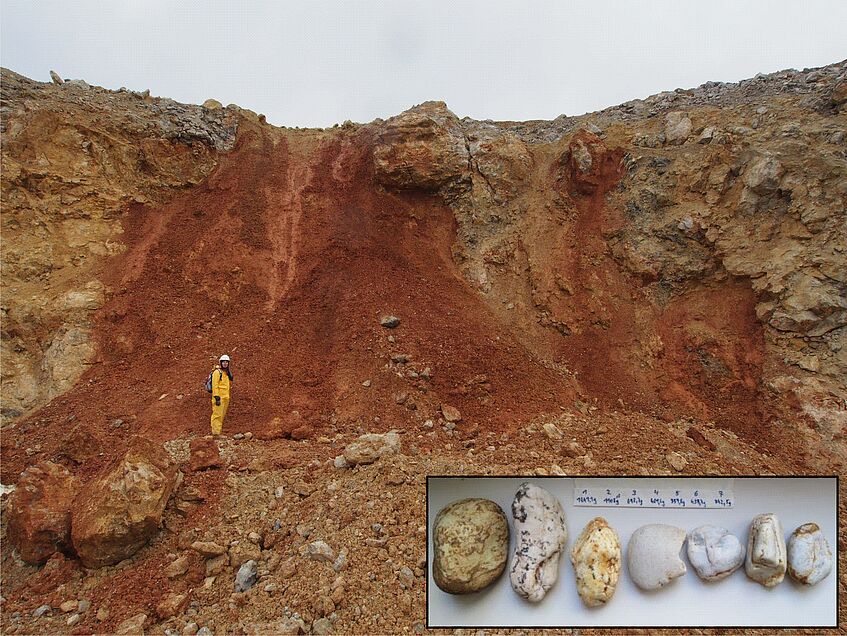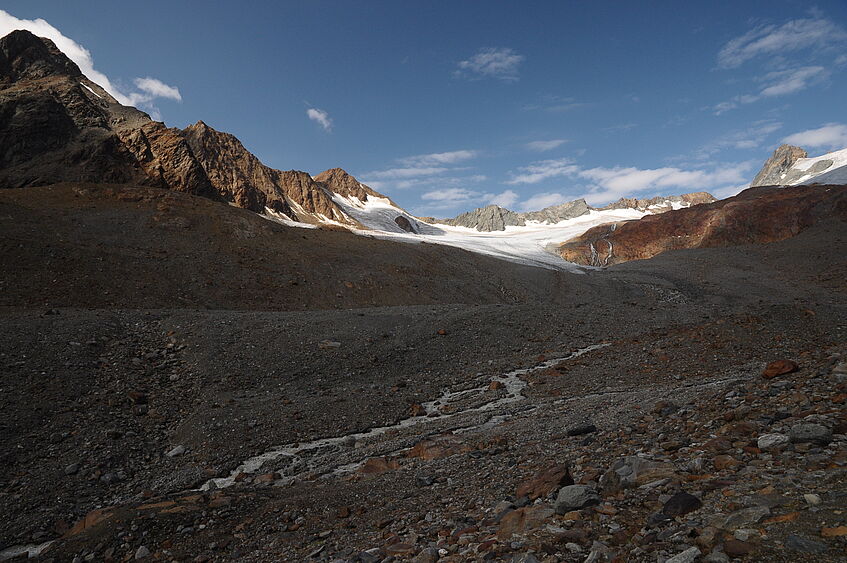Cosmogenic radionuclides
Cosmogenic radionuclides
- The cosmogenic nuclides 10Be (T1/2 = 1.39 Myr), 26Al (T1/2 = 717 kyr) and 36Cl (T1/2 = 301 kyr) are continuously formed by solar and cosmic radiation in the atmosphere. With their help, natural archives such as ice cores, sediments or water can be dated. If a higher or lower production of the above mentioned nuclides compared to today's rate is detected, this may indicate additional sources of cosmic radiation or changes in the magnetic fields of the earth or our sun in the past. In addition, 10Be, 26Al and 36Cl can be used to measure the duration of exposure to cosmic rays at the surface of a rock. This so-called surface exposure dating can provide information about processes on the Earth's surface and can be used, e.g. to study glacier movements.
- The newly developed ILIAMS (Ion Laser InterAction Mass Spectrometry) setup at VERA improves the possibility to measure 26Al and 36Cl by laser-assisted isobar separation. By suppressing the isobars 26Mg and 36S by several orders of magnitude, blank values of 26Al/Al = 5×10–16 and 36Cl/Cl = 8×10–16 can be achieved at VERA.
- As part of the RADIATE project, we worked with Science Animated to produce an animated video that explains how accelerator mass spectrometry (AMS) works. It shows fascinating applications and what we can learn about the Earth using AMS. Watch it on YouTube (link).
- More information can be found in our contribution to the blog of the European Association of Geochemistry (EAG).
User guide for sample preparation
| Nuclide | Material | (Metal) binder | Cathode material | Reference |
|---|---|---|---|---|
| 10Be | BeO | BeO:Nb = 1:2 to 1:4 by mass (min. 0.7 mg Nb)1 | Cu (with Cu pin) | Bachelor's thesis, Ibrahimovic |
| 26Al | Al2O3 | Al2O3:Fe = 1:1 to 1:2 by mass (min. 0.7 mg Fe)2 | Cu (with Cu pin) | (Lachner et al., 2021) |
| 36Cl | AgCl | mixed and pressed at VERA | Cu (with Cu pin) | |
| 41Ca | CaF2 | CaF2:PbF2 = 1:9 by mass (min. 0.7 mg PbF2)3 | Cu (with Cu pin) | (Martschini et al., 2022) |
Please label the sample containers as follows: for 10Be in black, for 26Al in blue, for 36Cl in green, and for 41Ca with a red pen.
Materials used at VERA:
1: Sigma Aldrich Niobium powder, <45 micron, 99.8%
2: Fisher Iron powder, -200 mesh, 99+%
3: Fisher Lead(II) fluoride, Puratronic™, 99.997%


